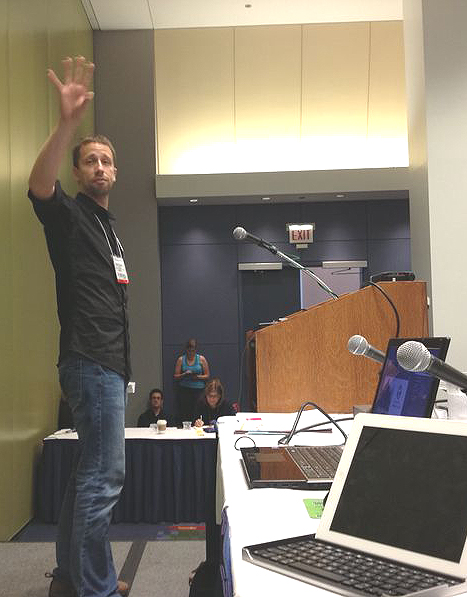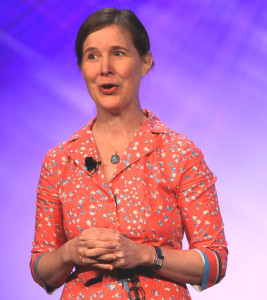
The Games and Gaming Roundtable hosted a panel of experts (including yours truly) in which the discussion focused on different ways of blending games and play with the power of creation and makerspaces.
I started the session talking about my work utilizing game design as way for students to demonstrate concept understanding and mastery throughout the design process and in the finished product. Working with classroom teachers and school librarians, I help guide students through designing a game based around curriculum being covered in class.
Students begin by playing games that introduce themes, mechanisms, and styles of play that can later be used as reference resources during the design process. Students then brainstorm game ideas and pitch them to the teaching team for thoughts and feedback. Once students have a game concept, they work in groups to develop their designs, meeting with the teaching team intermittently for feedback and direction from both a curricular, as well as a design approach. The project culminates with students playing each other’s designs and providing reflections on both the process itself and the other group’s designs.
Next, Jeff Ginger shared the work he is doing with his Champaign-Urbana Community Fab Lab, which empoweres youth through 3D modeling and printing. Ginger walked the group through creating models utilizing the Creature editor tools in the videogame Spore as an efficient and more intuitive creature-modeling environment. The platform provides a playful, discoverable interface that allows for complex modeling operations while giving students a safe environment in which they can make mistakes and reverse engineer their creations.
Once the creatures have been created in Spore, they can be exported to Blender), an open-source, cross-platform suite of tools for 3D creation, to help make final adjustments to the designs before they are brought into the printing software for rendering in the real world.
Jeff’s program is a wonderful example of how librarians can lead through technology and empower youths to be creators, helping support digital literacy and the democratization of production .
Scott Nicholson shared some very exciting opportunities for libraries to connect with their communities. Nicholson and the Syracuse Game Designers Guild have begun working with the community to help design games and play experiences to meet their needs. Scott is looking to grow this concept into a Game Designer Guildhall allowing libraries to replicate the program. The goal is to bring together gamers and game designers to help meet and support local schools, museums, and businesses.
Lastly, Caitlin Schaffer spoke about assessment tools she has begun developing that focus on the skills that attendees take away from game design programs. Built on ISTE’s Net Standards, her assessment looks at styles of game play and the impact they have on the patrons participating.
The Game Round Table’s program was an exciting representation of how gaming programs are growing in libraries. Design opportunities cultivate creativity, problem solving, inquiry, information literacy, STEAM skills (science, technology, engineering, art, and mathematics), and community building. Each of these are strong advocacy tools for gaming programs in your library.
BRIAN MAYER is gaming and library technology specialist at the Genesee Valley (N.Y.) Educational Partnership.


